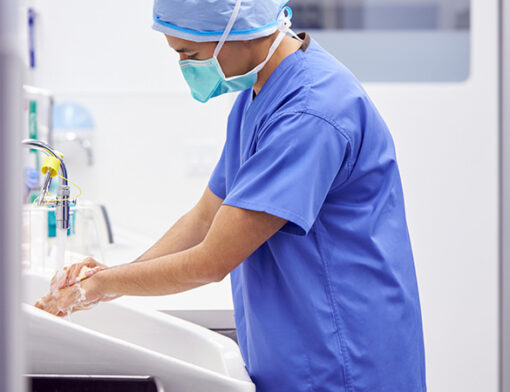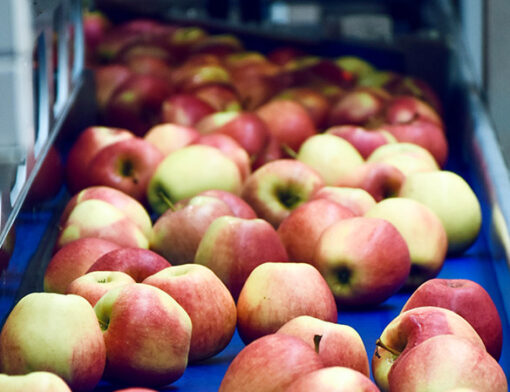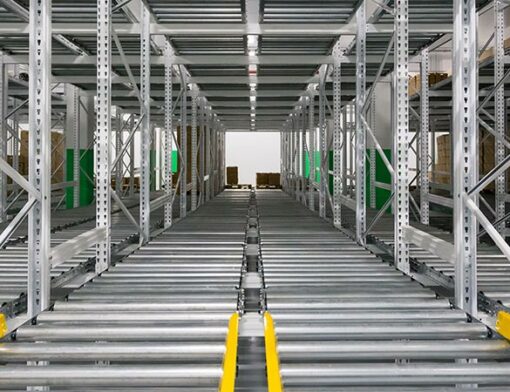Pre-wash: is it necessary?

Inefficient industrial washing can have serious public health consequences and is especially important in the food industry. It is estimated that food contamination is the cause of 420,000 deaths worldwide, and pre-washing ensures the proper sanitation and safety of equipment and products when the usual washing is not effective. Discover the true importance of pre-washing and how to do it effortlessly.
What is pre-washing?
Pre-washing is a process carried out in various industrial sectors before the main washing of utensils takes place. The goal is to remove grease or dirt that has been encrusted, dehydrated, or carbonized while cooking to facilitate washing.
In bakeries, pastry shops, central kitchens, smokehouses, hospitals and pharmaceutical industries, pre-washing is often applied to equipment that comes into contact with food, such as trays, containers and industrial carts. This process ensures more efficient cleaning and helps prevent cross-contamination between different production batches or between different types of products.
Is it really necessary to pre-wash?
In a word, no – if the right technology is used. There is no need to pre-wash manually when you have equipment that does not require pre-wash due to its washing efficiency.
This is the case with the MultiWasher, a state-of-the-art industrial washing machine designed to skip manual pre-wash. Given its ability to remove residues during washing, this equipment avoids the need for pre-washing, thus saving time, water, and energy. This happens because of high temperatures and water pressure. This technology combines heat, pressure, and water to remove residues and contaminants from equipment and surfaces.
How does pre-washing work in the MultiWasher?
MultiWasher’s integrated automatic pre-washing process achieves perfect sanitation levels because of a combination of processes working simultaneously.
- Use of high temperatures. Washing at high temperatures helps to dissolve and release fat, oils and food residues, making them easier to remove. In addition, heat also helps disinfects surfaces, eliminating pathogenic microorganisms and reducing contamination risk.
- High water pressure. The mechanical and precise force assists in the removal of residues. Water pressure can be configured to allow for different levels of dirt to be treated in a customized manner. This process is particularly effective when waste is not easily accessible or when it builds on uneven surfaces.
- Washing in a closed cabin. By containing the process within a closed structure, it is possible to control the cleaning environment, minimizing waste dispersal and worker exposure to chemical agents or contaminants. In addition, the enclosed cabin retains heat, maximizing the temperature effect on the cleaning process.
What are the advantages of choosing equipment with integrated pre-wash?
There are several advantages of having industrial equipment that integrates automatic pre-wash, such as the MultiWasher.
1. Significant time savings
One of the main advantages is the significant reduction in the time required to wash utensils. Manual pre-washing usually requires dedicated human resources, which can be directed to more productive tasks. By eliminating manual pre-washing, companies speed up their production processes, reducing downtime and increasing production capacity.
2. Saving water, energy, and detergent
Automating industrial pre-washing also results in water, energy, and detergent savings. Automated pre-wash equipment is designed to optimize the use of these resources, ensuring an efficient and sustainable pre-wash. Automated systems are able to precisely dose and control the amount of water and products required, avoiding waste and reducing operating costs.
3. Improving wash quality
Another important aspect to consider is improving wash quality. Manual pre-washing can be susceptible to human error and inconsistencies, resulting in waste and contamination. With automation, the equipment is programmed to perform the pre-wash in a standardized and controlled manner, ensuring a more effective and uniform wash. This is most relevant in the food industry, where washing is critical for product safety and regulatory compliance.
4. Workers’ health and safety
Using equipment with automatic pre-washing can also contribute to worker health and safety. Manual pre-washing usually involves handling aggressive chemicals and exposure to wet and slippery work environments. By eliminating or reducing this manual task, companies can minimize the risk of accidents and occupational illnesses, creating a safer and healthier work environment.
What types of manual pre-wash are recommended for extreme situations?
Although automatic pre-wash is highly efficient in most cases, there may be extreme situations where manual pre-wash is still necessary. For example, if utensils are excessively contaminated with substances that are difficult to remove, or if the dirt is located on surfaces that are difficult to reach. By combining the use of manual pre-wash in exceptional use cases and the Multiwasher for the most common scenarios, you can get the benefits of the efficiency and time savings.
The most common types of manual pre-washing include:
1. Immersion pre-wash
In this type of pre-wash, the objects to be washed are immersed in a container with a pre-wash solution. The immersion allows the chemical to penetrate the dirt, dissolving it before the main wash. This method is commonly used in food and metal industries.
2. Pre-wash by spraying
Using this method, a pre-wash solution is sprayed onto the objects or parts to be washed. The solution helps to release and remove the larger dirt before the main wash. This method is generally used in industries that work with large parts.
3. Jet pre-wash
This type of pre-washing involves using high-pressure water jets or compressed air to remove dirt and debris before the main wash. This method is effective in removing encrusted dirt such as paint, varnish, and hardened residues. Therefore, it is generally used in metalworking and construction industries.
4. Chemical pre-wash
In some cases, pre-washing involves specific chemicals to release and dissolve the dirt before the main wash. These products can include alkaline or acidic detergents, depending on the type of dirt to be removed. This method is common in the food, pharmaceutical, and chemical industries.
MultiWasher, the industrial washing machine that integrates pre-wash
The MultiWasher is already making a difference in various sectors, especially in the catering and bakery industries, where washing quality and efficiency are critical success factors. Equipment that meets food – such as bread trays, industrial bakery/smoking oven carts and gastronorms (the European standard for kitchenware trays and containers) – undergo an integrated process of an automatic and thorough washing. In the end, they come out of the machine perfectly clean, dry, and ready to use, safely and effortlessly.
This way, companies can skip the manual pre-wash step and get impeccable results. In addition, they save time, effort, labor, and reduce water, energy, and detergent consumption.
See this equipment in action and see the impact the MultiWasher can have on your business. Contact us and find out how to bring your industrial washing processes to perfection.



